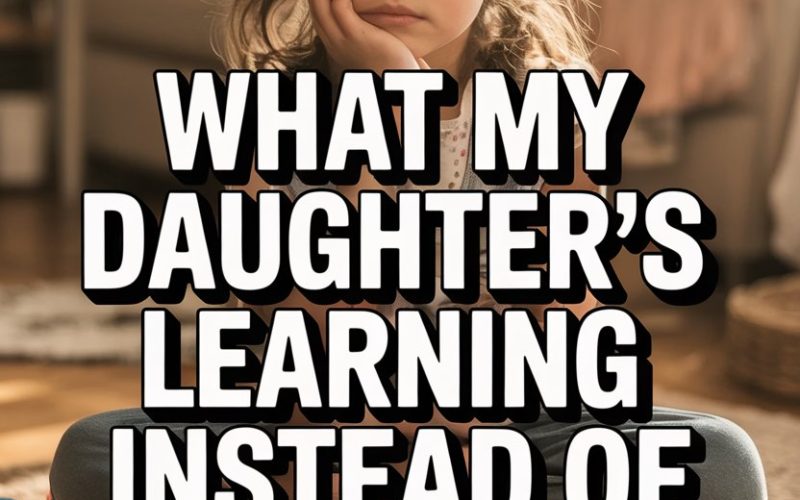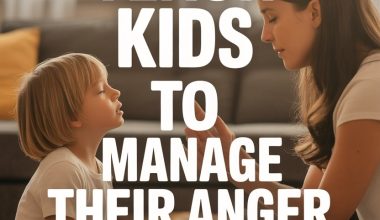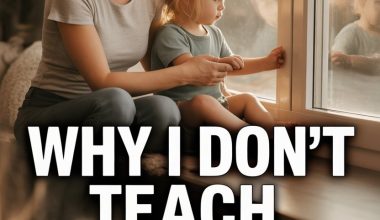Ah, “nice.” That syrupy, lemon-sherbet word adults love tossing at children like confetti at a birthday party. “Be nice!” we chirp, whenever playdates wobble on the knife’s edge between shrieks and giggles.
But as my daughter grows, I find myself less interested in her being “nice,” and more focused on something else entirely.
Here’s what she’s learning instead.
Kindness Means More Than Polite Smiles
It turns out, “nice” often asks for a performance. Polite smiles, whispered apologies, lending your crayons—even when you kind of want to keep them. All well and good, but what’s bubbling underneath?
My daughter’s discovering kindness isn’t about never ruffling feathers or saying what everyone expects.
Sometimes, it means stepping up when someone’s left out (even if you’d rather not), or sticking your neck out for a classmate being teased.
We talk a lot about what kindness actually feels like. Does your tummy go warm? Do you get a squiggly urge to help?
It’s messy and imperfect, and sometimes it’s as simple as sitting next to the lonely kid at lunch, even if that means you’re not at the “cool” table.
Want to help your child spot real kindness? Try asking, “What’s something you did today that made someone else feel good?” instead of the old standby, “Were you nice?”
Boundaries Are Not Rude
When I was a kid, not sharing was practically a criminal offence. “Go on, let her have a turn!” was a broken record, no matter how precious the toy or how much you’d already shared.
But here’s the thing: being “nice” shouldn’t mean giving up everything that matters to you. My daughter is learning her “no” is a full sentence.
She doesn’t have to hug relatives if she’s not feeling it. She’s allowed to keep her favourite glitter pen to herself.
This isn’t about raising Scrooges. It’s about teaching our children that respecting their own needs isn’t unkind—it’s healthy.
Even very young children can practise phrases like, “I’m not done with that yet, but you can have it when I’m finished,” or “I don’t want to play that game right now.”
The world is full of people who will test boundaries. I’d rather my daughter learns now that she’s allowed to have them.
Assertiveness Over People-Pleasing
Raise your hand if you’ve ever said yes to something you desperately didn’t want to do, just to keep the peace. (If you’re raising both hands, you’re my people.)
“Nice” often trains kids to please others at their own expense. I’d rather my daughter practises assertiveness—that middle path between doormat and dictator.
When she speaks up for herself (“I actually don’t like that nickname, could you call me by my real name?”), we cheer her on. It’s not always comfortable.
Sometimes other kids push back. But she’s figuring out that standing up for herself doesn’t make her mean—it makes her real.
Parents can model this, too. If you decline an invitation or correct someone gently, narrate it for your child. They’ll see that honesty and respect can go hand-in-hand.
Empathy Isn’t Always “Nice”
Empathy gets mistaken for agreeing with everyone or soothing over conflict. Real empathy is much grittier. It’s about putting yourself in someone else’s shoes, even when you don’t like where those shoes have been.
My daughter’s learning how to name feelings (her own and others’), which is a bit like finding the right label for a wild animal. “That kid looks angry because his tower got knocked down.” Or, “I felt sad when nobody picked me for the game.”
Sometimes empathy means being the only one who says, “That wasn’t fair,” even if it means disagreeing with your friends. Kids are surprisingly good at this, especially when adults resist the urge to jump in and fix everything.
Try some story swaps at dinner—“What made you feel really understood today?” or “When did you notice someone else’s feelings?” That’s where the magic starts.
Authenticity Wins Over Perfection
You know those kids who seem to have a permanent filter—always careful, never too loud, always colouring inside the lines? At what cost?
My daughter is learning that authenticity beats “nice” every single time. She’s allowed to have big feelings, to make mistakes, to say what she means—even if it’s not sugar-coated.
“Nice” can easily become another word for “never upset anyone.” Authenticity, on the other hand, allows room for honesty, laughter, and yes, the odd foot-in-mouth moment. Life’s much more interesting that way.
Try trading “Be nice” for “Be yourself.” You might be amazed by who shows up.
Collaborative Problem-Solving Instead of Keeping the Peace
Kids who are always “nice” often become expert peace-keepers, smoothing over disputes by sacrificing their own needs. But life’s full of sticky situations that require actual negotiation.
We’ve been practising collaborative problem-solving in our house, which is a fancy way of saying: “Can you come up with a solution together where everyone gets a bit of what they want?”
If your child is stuck in a tug-of-war over a toy, resist the urge to referee. Ask, “Can you two find a way to share that works for both of you?”
Will it always work? Absolutely not. That’s part of the lesson.
Research shows that kids who practice problem-solving skills are more resilient and better equipped to handle conflicts later in life.
Courage to Disagree
Agreeing to keep the waters calm? That’s the “nice” way. Speaking up when you think something’s wrong? That takes guts.
We’ve had chats about what it means to disagree respectfully (“I see it differently” or “I don’t think that was okay”), and, crucially, how to handle it when others get shirty about it.
Not every disagreement needs to end in tears—or in everyone agreeing.
Modelling this at home helps. When my partner and I disagree (and our daughter is within earshot), we try to show healthy ways to argue, listen, and move forward—without needing a winner or a loser.
It’s less “nice,” more brave.
Self-Compassion Over Self-Sacrifice
The “nice” trap often teaches kids to put themselves last. Someone else wants your snack? Give it up. Someone else had a bad day? Swallow your feelings.
My daughter’s learning there’s a world of difference between compassion and self-sacrifice. She can care about others while still caring for herself.
If she’s tired, she can sit out a game. If she’s upset, she’s allowed to say so.
We’re working on that inner voice—the one that says, “I matter, too.” Self-compassion isn’t selfish; it’s the foundation of being able to care for others without burning out by age ten.
Try a bedtime ritual: “What’s one kind thing you did for yourself today?” It’s a habit worth building.
Honest Apologies, Not Automatic Sorries
Many kids get in trouble and instantly blurt, “Sorry!” hoping it’s the password back into adult approval. But those sorries ring hollow, don’t they?
We’re focusing on honest apologies. If my daughter’s knocked over a friend’s block tower, we don’t demand a forced “sorry.” Instead, we ask her to check on the other child and, when she’s ready, offer a real apology if it’s needed.
An honest apology is specific and connected to empathy—“I’m sorry I knocked down your tower. I didn’t mean to. Are you okay?” That’s worlds away from the perfunctory “sorry” kids learn to parrot.
Research backs this up: Children develop deeper social understanding when they’re encouraged to make amends rather than just say the words.
Genuine Friendships Over Popularity
The world’s full of pressure to be liked by everyone. But “nice” kids sometimes end up with lots of acquaintances but few true friends.
My daughter’s learning to look for friends who accept her as she is, not just who like her best when she’s agreeable.
She’s allowed to say no to games she doesn’t enjoy. She’s allowed to walk away from friendships that feel one-sided.
We talk a lot about “who feels good to be around?”—not just “who likes you?” It’s a subtle difference, but it shapes how she approaches relationships for life.
The Real Goal: Raising Kids Who Are Good, Not Just “Nice”
“Nice” is easy to measure. Did you share your sweets? Did you say please and thank you? Tick, tick, tick. But “good” is something else.
It’s about acting with integrity, treating yourself and others with respect, and having the courage to show up as your real self—warts, quirks, and all.
That’s what my daughter’s learning, and what I hope she chooses, even when I’m not watching.
What If We All Ditched “Nice”?
Imagine a world where our kids grow up knowing how to stand their ground, offer genuine kindness, apologise with sincerity, and forge friendships that last.
No more “nice” as a thin disguise for people-pleasing and boundary-blurring. Just kids who are real, resilient, and ready for the tricky, wonderful business of being human.
Now, wouldn’t that be something worth teaching?





